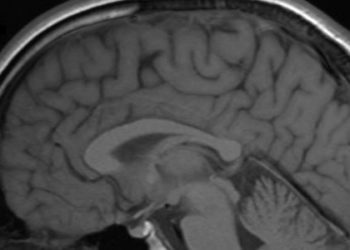Xanomeline-trospium treatment showed improvement in patients with schizophrenia
1. Xanomeline-trospium treatment showed a greater reduction in the degree of psychosis in patients with schizophrenia compared to placebo.
2. Patients treated with xanomeline-trospium experienced adverse events such as constipation and nausea but no increase in the incidence of extrapyramidal symptoms.
Evidence Rating Level: 1 (Excellent)
Study Rundown: Current medications, primarily dopamine-antagonists, are used to treat schizophrenia. These medications cause side effects including metabolic disturbances leading to patients withdrawing from prescribed dosing. However, little is known about muscarinic cholinergic receptor agonists and peripheral antagonists as treatments for schizophrenia. As such, the trial examined the safety and efficacy of a combination treatment of xanomeline, a muscarinic receptor agonist, and trospium, a peripherally restricted muscarinic receptor antagonist. Patients receiving the treatment displayed a lower positive and negative syndrome scale (PANSS) score at the end of the study, which indicated this treatment is effective in patients with poor functional status. However, the study resulted in adverse events which were common in both study groups. The study was limited by a small number of study participants resulting in a low power value. Moreover, the study was conducted over a short period of time with no long-term follow-up. Nonetheless, this study’s results are significant, and its findings highlight the xanomeline-trospium combination treatment to be effective in patients with schizophrenia.
Click to read the study in NEJM
In-Depth [randomized controlled trial]: This phase 2, double-blind study enrolled 182 participants across 12 hospitals in the United States. Participants between 18 and 60 years of age diagnosed with schizophrenia, a PANSS baseline score of 80 or more, and an episode of acute exacerbation or relapse of psychosis were enrolled into the study. Participants with a history of treatment resistance to antipsychotic medications were excluded from the study. Patients were randomized in a 1:1 ratio to xanomeline-trospium or placebo, respectively. The primary endpoint of the study was a change in the PANSS score from baseline at week five. The study results displayed a mean change of -17.4 points in the treatment group and -5.9 points in the placebo group (least-square means difference, -11.6 points; 95% confidence interval [CI], -16.1 to -7.1; P<0.001). Common adverse events included constipation, nausea, xerostomia, dyspepsia, and vomiting (treatment group, 54%; placebo group, 43%). Overall, the study showed a xanomeline-trospium combination treatment for schizophrenia shows was efficacious; however, further investigation needs to be conducted for the safety of the treatment.
Image: PD
©2021 2 Minute Medicine, Inc. All rights reserved. No works may be reproduced without expressed written consent from 2 Minute Medicine, Inc. Inquire about licensing here. No article should be construed as medical advice and is not intended as such by the authors or by 2 Minute Medicine, Inc.







